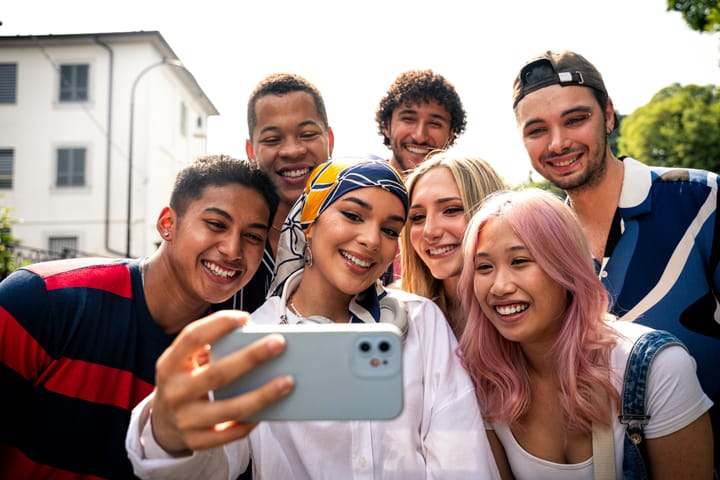Virality & Trending Challenges On Social Platforms In 2025
Virality has driven content success on platforms like TikTok, Instagram, YouTube Shorts, and Facebook Reels. In 2025, trending challenges range from AI-generated filters and AR-enhanced dance trends to fitness movements and socially conscious campaigns.

Hello, BizMinds!
In the age of social media, virality is the holy grail of online content. Platforms like TikTok, Instagram, YouTube Shorts, and Facebook Reels have revolutionized how trends spread, making viral challenges a key driver of engagement. From dance challenges to viral pranks and user-generated memes, trending challenges shape social interactions, marketing strategies, and cultural movements.
However, while virality offers brands and creators the potential to reach millions overnight, it also comes with risks and unpredictability. This article explores the latest trends in viral content, how social media platforms amplify them, and the controversies surrounding trending challenges in 2024.
How Virality Works on Social Media
Virality is fueled by platform algorithms that prioritize engaging, shareable, and time-sensitive content. Here’s how it works:
1. Algorithm-Driven Content Distribution
Social media platforms use AI-powered algorithms to push viral content to wider audiences. Factors influencing virality include:
- Watch Time: The longer people watch, the more the algorithm boosts the content.
- Shares & Engagement: High shares, comments, and likes signal the algorithm to expand the content’s reach.
- User-Generated Content (UGC): Platforms prioritize content, encouraging user participation through duets and remixes.
2. The Role of Hashtags & Challenges
Hashtags help categorize viral trends, making them easier to discover. Trending challenges often include:
- Dance Challenges: Originating on TikTok, these trends are often set to catchy music tracks.
- Prank & Reaction Challenges: Popular on YouTube and Instagram, these challenges involve humor and audience interaction.
- DIY & Life Hacks: Informational and educational trends that go viral due to their practical value.
3. Cross-Platform Expansion
A viral trend doesn’t stay confined to one platform. A trend that starts on TikTok can spread to Instagram Reels, YouTube Shorts, and even Twitter/X thanks to resharing and remixing.
Trending Challenges in 2025
1. AI-Generated Challenges
Artificial Intelligence is playing a more significant role in viral content. AI-powered filters, voiceovers, and challenges are gaining traction, such as:
- AI-Powered Photo Transformations (turning selfies into artwork or animated characters).
- AI Voice Mimic Challenges (where users replicate celebrity or AI-generated voices).
2. Dance Challenges Evolving with AR & VR
Augmented Reality (AR) and Virtual Reality (VR) elevate dance trends. Creators use AR filters to enhance dance videos, and some VR platforms now support metaverse dance battles.
3. Fitness & Health Trends
Short-form workout challenges and health trends are prevalent in 2024, especially those promoting 10-minute fitness hacks, mindfulness challenges, and plant-based diet trends.
4. Socially Conscious Challenges
More viral trends now focus on social issues, such as:
- Eco-friendly trends promoting sustainability and climate awareness.
- Mental health awareness challenges that encourage open conversations.
- Charity-based trends where influencers and brands donate based on shares.
5. Dangerous & Controversial Challenges
While some trends are fun and harmless, others have sparked major controversies due to safety risks and ethical concerns. Some problematic challenges include:
- Risky Pranks: Challenges that could potentially harm participants.
- Extreme Diet Trends: Dangerous fasting or “miracle” diet hacks.
- Dare Challenges: High-risk activities like climbing buildings or reckless stunts.
The Dark Side of Virality: Controversies & Risks
1. The Spread of Misinformation
Many viral trends spread misinformation, leading to potential harm. Examples include:
- Fake health advice (e.g., miracle weight-loss hacks without scientific basis).
- Conspiracy-based challenges that promote false narratives.
- Deepfake trends that manipulate public perception.
2. Ethical Concerns in Influencer Marketing
Brands often capitalize on viral trends, but some have been accused of:
- Exploiting sensitive topics for engagement.
- Not correctly disclosing paid challenges, violating FTC guidelines.
- Encouraging unsafe behaviors for the sake of virality.
3. Platform Crackdowns on Dangerous Trends
Social media platforms have started cracking down on harmful trends. TikTok, Instagram, and YouTube have implemented stricter policies, removing videos that:
- Promote dangerous activities.
- Spread medical misinformation.
- Encourage discrimination or harassment.
Despite these efforts, challenges still surface, sometimes faster than platforms can regulate them.
How Brands & Creators Can Leverage Virality Responsibly
1. Creating Ethical & Engaging Challenges
Brands can still capitalize on viral trends without resorting to controversy. Here’s how:
- Encourage UGC in a safe, inclusive manner.
- Align with positive social causes (e.g., sustainability, mental health awareness).
- Ensure brand transparency when participating in paid viral campaigns.
2. Using Trend Forecasting for Early Adoption
To stay ahead of the curve, marketers can use trend forecasting tools like:
- Google Trends (to track rising search interests).
- TikTok Creative Center (to monitor trending challenges).
- Instagram’s Explore Page (to identify fast-growing trends).
3. Implementing AI for Virality Prediction
AI-powered tools can analyze engagement patterns to predict which trends will go viral. Many social media agencies now use AI-driven analytics to identify emerging viral content before it peaks.
4. Avoiding the Hype Trap
Not all viral trends are worth jumping on. Brands must evaluate:
- Relevance to brand identity.
- Potential risks and backlash.
- Longevity of the trend.
Sometimes, not participating in a trend is a more intelligent move than joining one that might become problematic later.
The Conclusion Zone
Virality remains one of the most powerful forces in digital marketing, capable of skyrocketing brand awareness and engagement overnight. However, as social platforms evolve, so do the challenges and risks associated with viral content.
Key Takeaways for 2025:
- Short-form video (Reels, Shorts, TikToks) dominates viral trends.
- AI-generated challenges and AR/VR enhancements are reshaping engagement.
- Socially responsible and purpose-driven challenges are gaining traction.
- Misinformation and harmful trends remain a challenge for platforms.
- Brands must balance trend participation with ethical considerations.
The key to success in the ever-changing world of viral content is staying informed, engaging authentically, and prioritizing safety. Whether you’re a creator, brand, or marketer, understanding how trends evolve will help you navigate the next wave of viral challenges in 2025.

